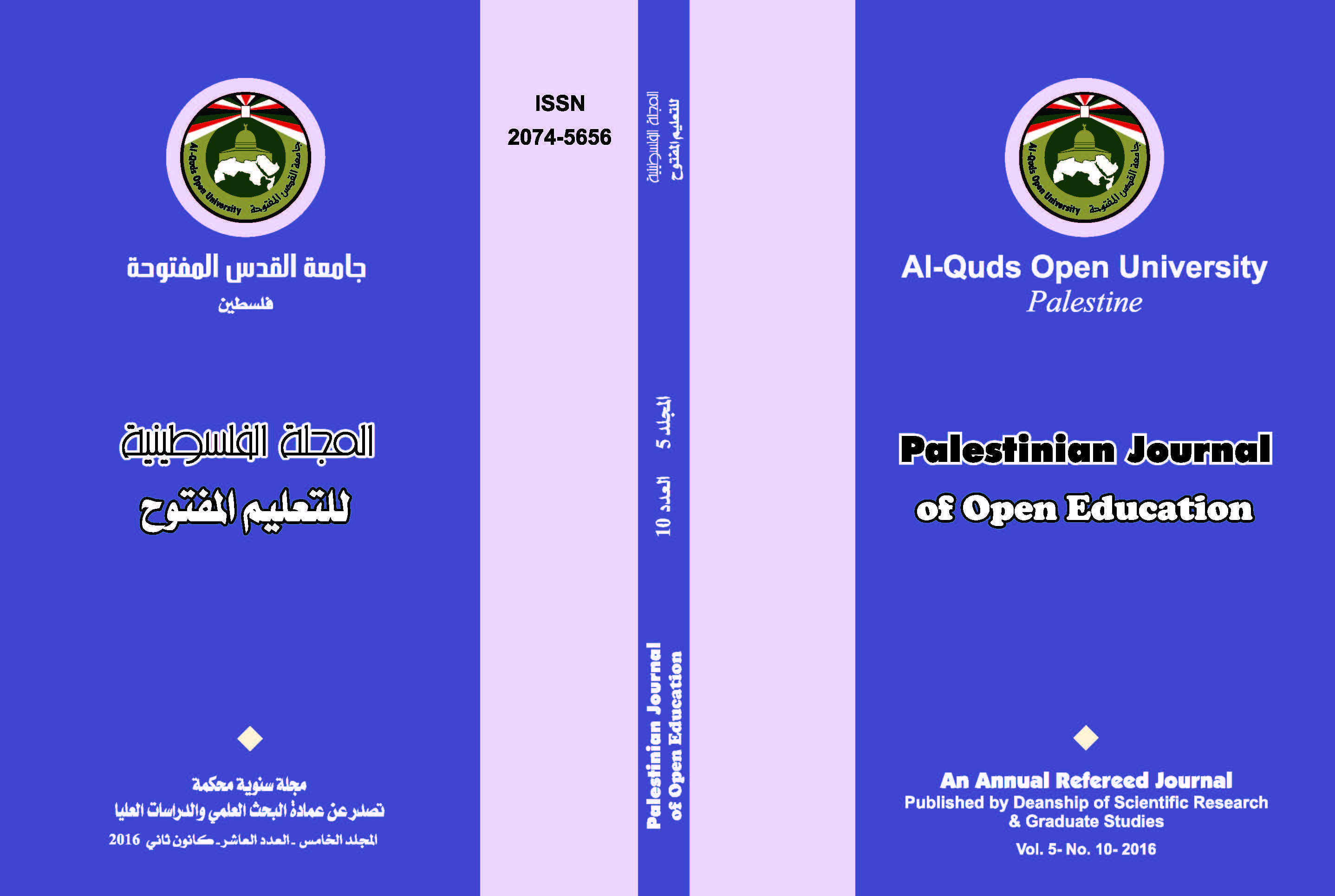Obstacles to the application of e- learning in Palestinian universities and ways to reduce them from students' the perspective of in light of some variables
Keywords:
e- learning- Palestinian universities - application of elearning obstaclesAbstract
The study aimed to identify the most prevailing obstacles to the
application of e- learning in the Palestinian universities from the perspective
of the students in the light of some variables. To achieve this, the researcher
used the descriptive analytical approach by constructing a questionnaire
which consists of (48) items, and with a sample of (281) students representing
(10%) from humanities and applied colleges from the Islamic University
and Ummah University.The study showed that the average degree of overall
response to all areas of the questionnaire for the study sample is (3.76) ,
while the total relative weight of all areas of the questionnaire (75.24%) .The
study revealed the following results:
1. The relative weight of the item: first, students who are busy at sites not related
to e- learning reached 84.34%; second, the large size of the university
curriculum makes a university professor tends to traditional education
with 83.6%; third, some teachers believe that e- learning eliminates their
role in the process of teaching with 80.64%; fourth, the small number of
devices in proportion to the number of students is 80.6%; and finally, there
is lack of cooperation between universities in the exchange of experiences
for the development of e- learning with 79.30%.
2. There were statistically significant differences at the level of (α≤0.05) of the
obstacles to the application of e- learning in the Palestinian universities
and in favor of open education over traditional.
3. No statistically significant differences at the level of significance
(α≤0.05) between the mean of the study of e- learning in Palestinian
universities using traditional or open in favor of open education, while there
were no significant differences by the variables: (sex, college, and
specialization) .
In light of the findings the researcher recommends:
1. Activating the role of academic guidance by e- learning centers for both
the teaching staff and students.
2. Strengthen cooperation between universities in terms of the exchange of
experiences for the development of e- learning, especially between the
Islamic University and the University of Al- Ummah.
Downloads
Published
How to Cite
Issue
Section
License
- The editorial board confirms its commitment to the intellectual property rights
- Researchers also have to commit to the intellectual property rights.
- The research copyrights and publication are owned by the Journal once the researcher is notified about the approval of the paper. The scientific materials published or approved for publishing in the Journal should not be republished unless a written acknowledgment is obtained by the Deanship of Scientific Research.
- Research papers should not be published or republished unless a written acknowledgement is obtained from the Deanship of Scientific Research.
- The researcher has the right to accredit the research to himself, and to place his name on all the copies, editions and volumes published.
- The author has the right to request the accreditation of the published papers to himself.







2.png)






_2.png)

